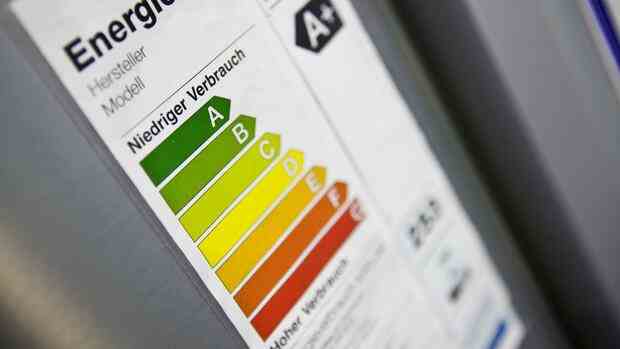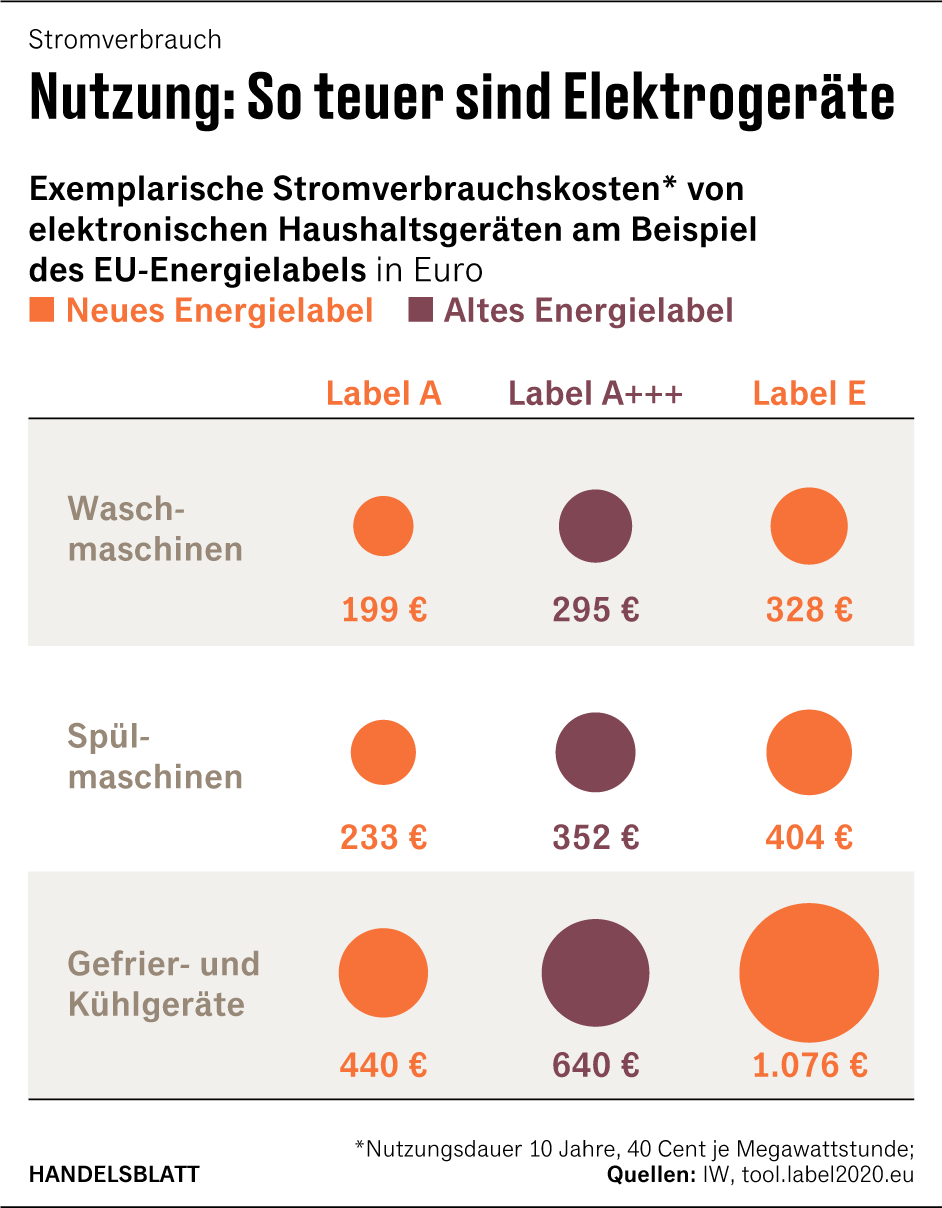There have been new energy efficiency labels for electrical appliances since March 2021. They are intended to better inform consumers about which products save energy.
(Photo: KEYSTONE)
Dusseldorf Electronic devices with the energy label A+++ are often not particularly energy-efficient. This is shown by a study by the Institute of German Economics (IW) in Cologne.
Until March 2021, A+++ was the best category that a dishwasher, washing machine or refrigerator could achieve. Since March 2021, the efficiency classes have ranged from A to G – with A as the best grade and G as the worst grade. However, many devices still have the old signs – and with the A+++ label give the wrong impression.
According to the study, old devices in class A+++ would only be in the middle when it came to energy consumption costs, i.e. they would receive the grade E. The author of the study writes: “Older devices in lower energy classes than A+++ have great potential to represent a financial burden.”
The researcher compared the costs of various electrical appliances, each for washing machines, dishwashers, freezers and refrigerators. She assumed that washing machines and dishwashers would be used twice a week.
The result: The consumption costs of devices with the previous top class A+++ are sometimes closer to those of today’s third worst category E than to those of today’s best category A. All calculations are based on an electricity price of 40 cents per kilowatt hour.
>> Also read: When will consumer electricity prices drop?
For example, a Label-A washing machine with a purchase price of between 510 and 600 euros costs 199 euros over ten years of use. For an A+++ device, on the other hand, it is 295 euros – only slightly less than for a device with the E energy label (328 euros).
The price differences are particularly large for freezers and refrigerators, which cost between 1000 and 1250 euros. Here, the use of the Label A device over ten years costs 440 euros, the A+++ device 640 euros and the E device 1076 euros.
The author of the study concludes: “It is advisable to review the current devices in the household and to consider an economically advantageous new purchase.”
Economical devices are particularly worthwhile when electricity prices are high
The results of the study are becoming more relevant in the current phase of high energy prices. Because the higher the electricity costs, the higher the expenses for power-guzzling devices.
The federal government has capped the electricity costs for consumers with its electricity price brake to a maximum of 40 cents per kilowatt hour – exactly the price that the IW researcher had expected. However, this only applies to 80 percent of the previous year’s consumption. If you use more electricity, you may be confronted with high costs.
It can be all the more worthwhile to compare when buying new electrical appliances to see which appliance causes the lowest costs in use. Despite the energy labels, this is not easy.
The IW study states: “After deciding to buy a new product, the recommendation for consumers is to calculate the actual consumption costs based on an average consumption time and an average consumption price in euros.”
>> Read also: Energy Label – What applies to washing machines, ovens and the like
The current study situation shows that test groups who receive monetary information instead of information in kilowatt hours compare devices correctly for the most part and take the costs of electricity consumption into account in their purchasing decisions.
Criticism: Labels miss the transparency goal
In reality, consumers often do not attach enough importance to energy consumption costs when buying new electrical appliances, according to the study. There is a so-called conspicuousness bias: When making a decision to buy household appliances, the purchase price is given excessive consideration, while the consumption costs are given little or no consideration in the decision.
The author of the IW study criticizes that the new scale will soon be obsolete again. Devices are becoming more and more energy efficient. Whenever you determine that a certain consumption is A, then in a few years all devices on the market will be in this highest category. Therefore, she suggests that perhaps one should not work with letters, but with actual costs that the devices incur.
More: How to save money with smart meters


